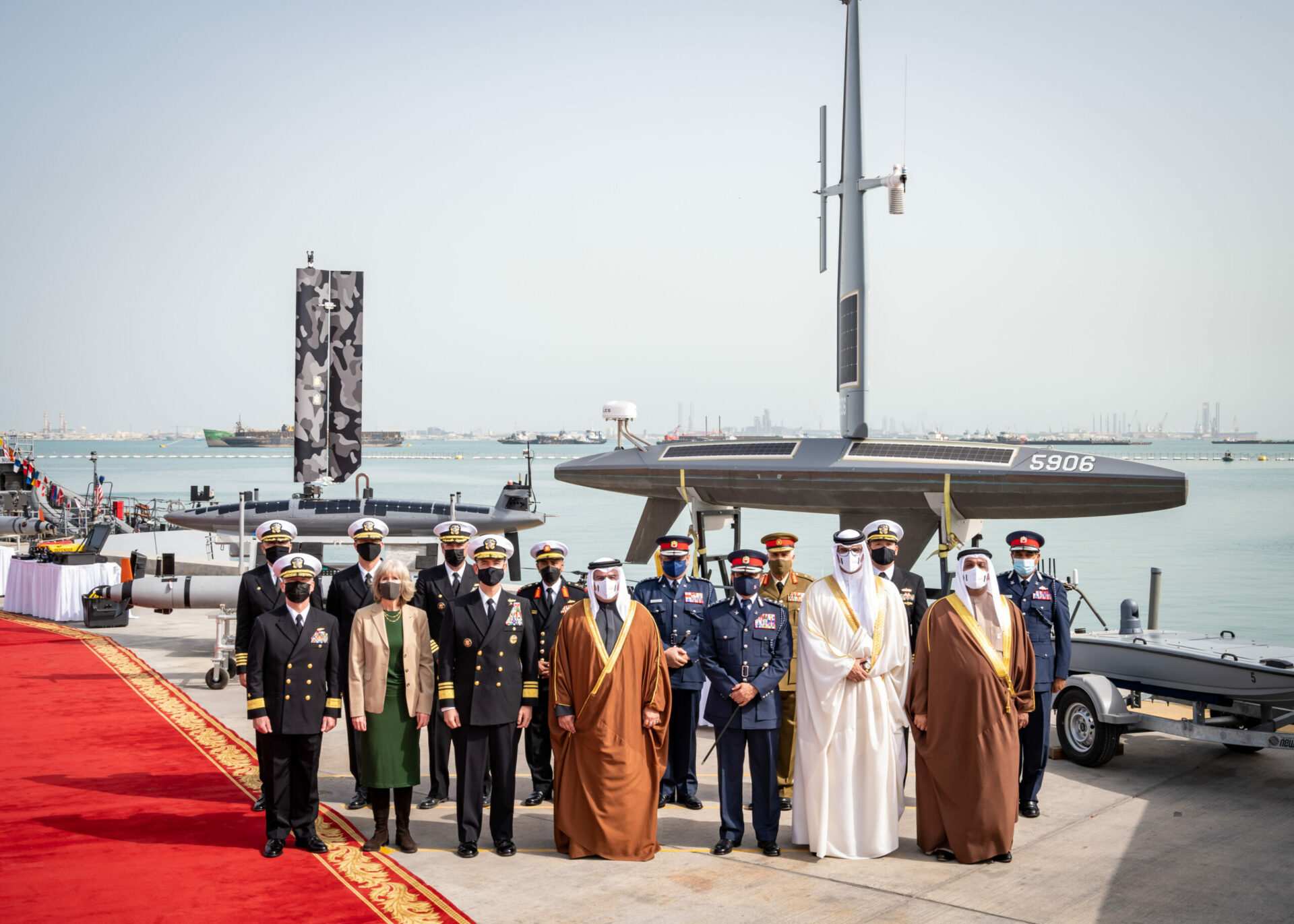
A massive naval exercise underway in the Middle East is incorporating unmanned vehicles and artificial intelligence to test out ways to improve maritime awareness across a large geographic area.
“These [14 training scenarios] were developed over the planning process to offer participating forces the opportunity to demonstrate the tremendous potential for unmanned systems and artificial intelligence to solve some of the complex problems we have here in the maritime environment,” Cmdr. Tom McAndrew, the lead planner for Task Force X, which oversees the unmanned elements of the exercise, told reporters Wednesday.
This year, Fifth Fleet combined its International Maritime Exercise 2022 with 6th Fleet’s Cutlass Express exercise to increase cooperation between the fleets and develop relationships between other participants. The 18-day naval exercise involves 9,000 people and 50 ships from 60 nations, according to the Navy. Its operations are taking place in the Arabian Gulf, the Arabian Sea, the Gulf of Oman, the Red Sea, and the North Indian Sea.
The exercise also involves 80 air, surface, and underwater unmanned systems from the United States and nine other nations, said McAndrew. Task Force X consists of personnel from the U.S. Navy’s Task Force 59, which was stood up in September to work on quickly learn and integrating unmanned systems and artificial intelligence into the fleet.
Among the U.S. systems are the Saildrone Explorer, the Mantas T-12, and the Switchblade 300. These are controlled locally and underway from several maritime operations centers, and from a robotics operations center, McAndrews said.
Their operators are running them through 14 training scenarios designed to reveal how unmanned systems and AI can be used in real-world operations in the region. Navy leaders hope unmanned systems will help them keep better tabs on the goings-ons in the waters around the Arabian Peninsula, as well as above and below them
“In simple terms, it’s a big area of responsibility, and unmanned systems can help us improve our ability to detect, rapidly respond, and provide deterrence,” McAndrews said.
Some of the scenarios they are looking to exercise with drones include how they can help to quickly find sailors who fall overboard or provide remote 24/7 monitoring of an area.
“Some of the platforms we have, like if it’s an airplane, has [sic] fuel requirements and a certain amount of time that it can stay on station. And many of these unmanned platforms are designed with that in mind. They can operate for days, weeks or months without intervention,” McAndrews said.
One of the problems with monitor a vast region is sorting through the correspondingly vast amounts of photos, video, and data. Artificial intelligence promises to make it easier to spot and share useful information.
“Ultimately, the whole goal is to help AI improve the commander’s decision,” McAndrews said.
Even countries that didn’t bring an unmanned system can get involved in at least some of the scenarios in this unclassified exercise, Cmdr. Kenyatta Martin, the exercise’s lead planner. In the future, that classification could change as relationships grow and the ability to share data gets better.
___
© 2022 Government Executive Media Group LLC
Distributed by Tribune Content Agency, LLC.